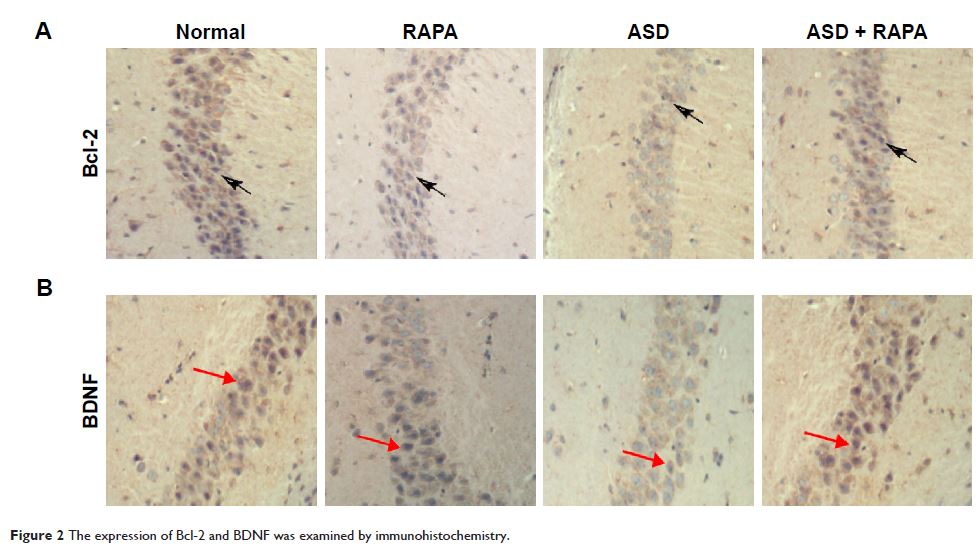9 0 8 0 2
论文已发表
注册即可获取德孚的最新动态
IF 收录期刊
- 2.6 Breast Cancer (Dove Med Press)
- 3.9 Clin Epidemiol
- 3.3 Cancer Manag Res
- 3.9 Infect Drug Resist
- 3.6 Clin Interv Aging
- 4.8 Drug Des Dev Ther
- 2.8 Int J Chronic Obstr
- 8.0 Int J Nanomed
- 2.3 Int J Women's Health
- 3.2 Neuropsych Dis Treat
- 4.0 OncoTargets Ther
- 2.2 Patient Prefer Adher
- 2.8 Ther Clin Risk Manag
- 2.7 J Pain Res
- 3.3 Diabet Metab Synd Ob
- 4.3 Psychol Res Behav Ma
- 3.4 Nat Sci Sleep
- 1.9 Pharmgenomics Pers Med
- 3.5 Risk Manag Healthc Policy
- 4.5 J Inflamm Res
- 2.3 Int J Gen Med
- 4.1 J Hepatocell Carcinoma
- 3.2 J Asthma Allergy
- 2.3 Clin Cosmet Investig Dermatol
- 3.3 J Multidiscip Healthc

雷帕霉素 (Rapamycin) 调节脑源性神经营养因子和 B 细胞淋巴瘤 2,以减轻大鼠自闭症谱系障碍
Authors Zhang J, Liu LM, Ni J
Received 19 October 2016
Accepted for publication 25 November 2016
Published 20 March 2017 Volume 2017:13 Pages 835—842
DOI https://doi.org/10.2147/NDT.S125088
Checked for plagiarism Yes
Review by Single-blind
Peer reviewers approved by Prof. Dr. Roumen Kirov
Peer reviewer comments 2
Editor who approved publication: Professor Wai Kwong Tang
Abstract: The number of children suffered from autism spectrum disorder (ASD) is
increasing dramatically. However, the etiology of ASD is not well known. This
study employed mammalian target of rapamycin inhibitor rapamycin to explore its
effect on ASD and provided new therapeutic strategies for ASD. ASD rat model
was constructed and valproic acid (VPA) was injected intraperitoneally into
rats on pregnancy day 12.5. Offspring from VPA group were divided into ASD
group and ASD + rapamycin (ASD + RAPA) group. Compared with normal group, the
frequency and duration of social behavior and straight times of ASD group were
shortened, but the grooming times were extended. Meanwhile, in ASD group, the
average escape latency and the frequency of crossing plates were decreased, the
apoptotic index (AI) detected by TUNEL assay was increased, and the expression
of brain-derived neurotrophic factor (BDNF) and B-cell lymphoma 2 (Bcl-2)
analyzed was decreased with great difference compared with normal group (P <0.01). However, rapamycin
treatment in ASD rats mitigated the ASD-like social behavior, such as the
frequencies of straight and grooming. Furthermore, rapamycin shortened the
average escape latency, but increased the frequency of crossing plates of ASD
rats. In hippocampus, rapamycin decreased the AI, but increased the levels of
BDNF and Bcl-2 (P <0.01) of ASD rats. These
findings revealed that rapamycin significantly mitigated the social behavior by
enhancing the expression of BDNF and Bcl-2 to suppress the hippocampus
apoptosis in VPA-induced ASD rats.
Keywords: autism spectrum disorder, B-cell lymphoma 2, brain-derived
neurotrophic factor, hippocampus, rapamycin, valproic acid
